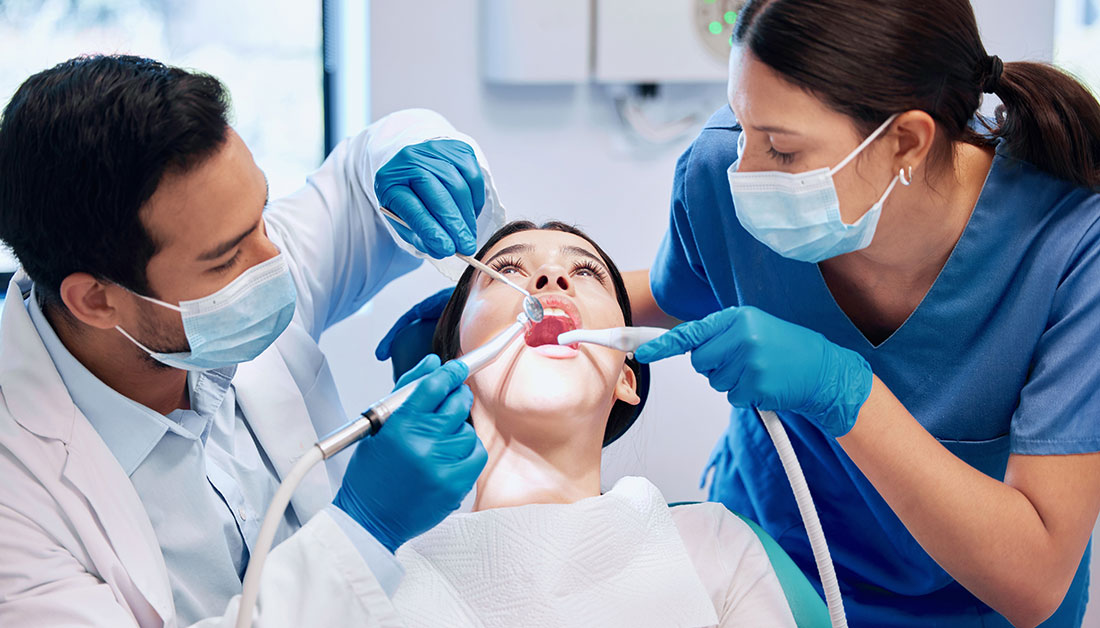Call 408-257-5950 • 19000 Cox Avenue, Suite A • Saratoga, CA 95070
Understanding Dental Extractions: A Comprehensive Guide

At Saratoga Dentistry, we understand that the prospect of having a tooth extracted can be daunting. However, with modern dental techniques and proper aftercare, the process can be smooth and comfortable. This guide will walk you through what dental extractions are, why they’re sometimes necessary, and how to ensure a speedy recovery.
What is a Dental Extraction?
A dental extraction is a procedure in which a tooth is removed from its socket in the bone. While our primary goal at Saratoga Dentistry is always to preserve your natural teeth, there are situations where an extraction becomes necessary. This might be due to:
- Severe tooth decay or damage
- Advanced periodontal disease
- Impacted wisdom teeth
- Orthodontic treatment requiring more space in the mouth
- Fractured teeth that cannot be repaired
The Extraction Process: What to Expect
Many patients worry about pain during a tooth extraction. Rest assured, at Saratoga Dentistry, your comfort is our top priority. Here’s what you can expect during the procedure:
- Anesthesia: Before the extraction begins, we will numb the area around the tooth to be removed. This ensures you feel no pain during the procedure.
- Extraction: Using specialized tools, your dentist will carefully loosen the tooth and remove it from its socket.
- Post-Extraction Care: After the tooth is removed, we may place gauze in the socket and have you bite down to help a blood clot form.
The entire process is typically quick and straightforward, especially for visible teeth. For impacted teeth or those below the surface, the procedure might be more complex, but our experienced team at Saratoga Dentistry is well-equipped to handle all types of extractions.
Recovery: The First 24 Hours
The hours immediately following your extraction are crucial for proper healing. Here are some essential guidelines to follow:
- Maintain the Blood Clot: Avoid drinking through a straw, smoking, or rinsing your mouth vigorously for at least 24 hours. These actions can dislodge the blood clot that forms in the socket, leading to a painful condition called dry socket.
- Manage Swelling: Apply a cold cloth or ice pack to your cheek near the extraction site. This helps reduce swelling and discomfort.
- Rest: Take it easy for the rest of the day. Avoid strenuous activities that might increase blood flow and lead to more bleeding.
- Eat Soft Foods: Stick to soft foods like yogurt, pudding, and lukewarm soup. Avoid hot foods or drinks that might irritate the extraction site.
- Pain Management: Take any prescribed pain medication or over-the-counter pain relievers as directed by your dentist.
Long-Term Recovery and Oral Care
As you move past the first 24 hours, you’ll need to adjust your oral care routine slightly to promote healing:
- Gentle Rinsing: After 24 hours, you can gently rinse your mouth with warm salt water (1/2 teaspoon of salt in a cup of warm water) to keep the area clean.
- Brush Carefully: Continue brushing and flossing your other teeth as usual, but be careful around the extraction site. Avoid directly brushing the extraction area for the first few days.
- Healthy Diet: Gradually reintroduce solid foods as you feel comfortable. A nutritious diet aids in healing.
- Avoid Tobacco: If you smoke, try to avoid it for at least a week. Smoking can significantly delay healing and increase the risk of complications.
- Watch for Complications: While rare, complications can occur. Contact Saratoga Dentistry immediately if you experience severe pain, excessive bleeding, or signs of infection like fever or pus discharge.
The Healing Process: What to Expect
Healing after a tooth extraction is generally quick. Here’s a typical timeline:
- First 24 hours: Blood clot forms
- 2-3 days: Swelling should subside
- 7-10 days: Any remaining stitches can be removed
- 2 weeks: The initial healing of the extraction site is usually complete
However, it’s important to note that the bone and gum tissue will continue to remodel for several months after the extraction.
Long-Term Considerations After an Extraction
While the immediate recovery from an extraction is relatively short, it’s important to consider the long-term impact of losing a tooth:
- Shifting Teeth: Adjacent teeth may start to shift into the empty space, potentially affecting your bite and smile.
- Bone Loss: Due to a lack of stimulation, the jawbone that supported the extracted tooth may begin to deteriorate over time.
- Changes in Appearance: Depending on the location of the extracted tooth, you might notice changes in your facial appearance.
To mitigate these effects, your dentist at Saratoga Dentistry might recommend tooth replacement options such as dental implants, bridges, or partial dentures. These solutions not only restore your smile but also help maintain your oral health and facial structure.
Conclusion: Your Partner in Dental Health
At Saratoga Dentistry, we’re committed to providing you with the highest quality care before, during, and after your tooth extraction. While extractions are sometimes necessary, they’re just one part of maintaining your overall oral health.
Remember, regular dental check-ups and good oral hygiene practices are key to preventing the need for extractions in the first place. By catching and treating issues early, we can often save teeth that might otherwise need to be removed.
Don’t wait until you’re in pain to seek dental care. Contact Saratoga Dentistry today to schedule your next appointment. Whether you need a routine cleaning, have concerns about a specific tooth, or are considering your options after an extraction, our team is here to provide personalized, compassionate care tailored to your unique needs.
Your smile is our priority, and we’re here to help you maintain it for life. Call us today to take the next step in your dental health journey!
